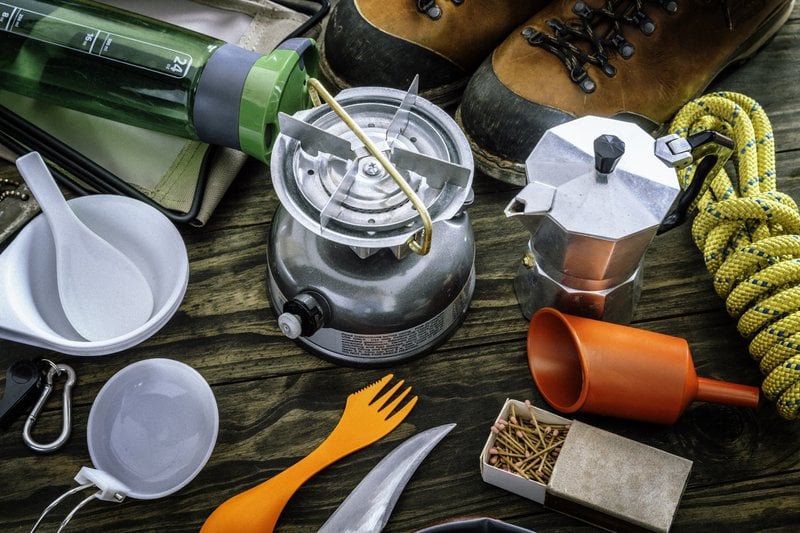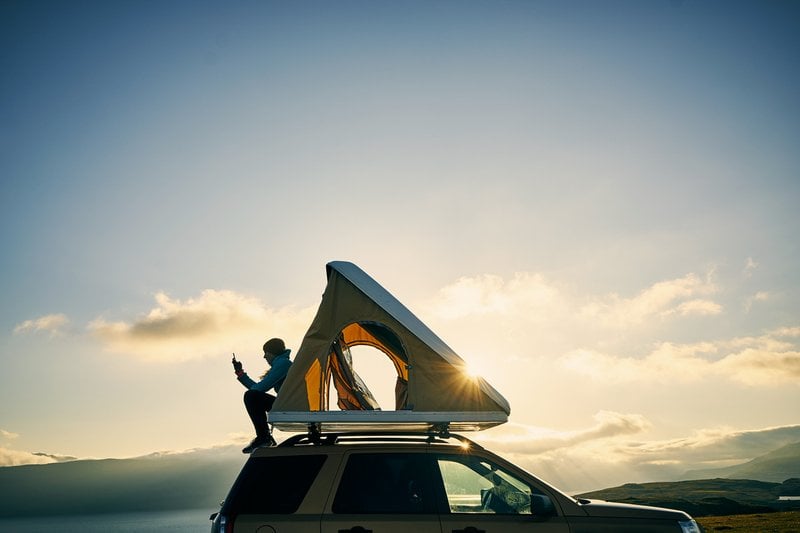5. Plan your meals (and snacks, too!)

The food that you pack will need to fit in your car. To make sure that you have plenty of room for it, consider doing the following:
Pack a cooler
You’ll need a cooler to keep your food and drinks cold. If you only camp for a short amount of time, get a smaller, compact cooler that can hold a meal or two, some drinks and water. Even longer-term campers can find smaller coolers they can refill a couple times during their travels.
Decide on a cooking method
If you plan to cook your own meals (which is the much cheaper option), you will need to decide on a cooking method. Some of your options include:
- A good ‘ole campfire - Cooking over a fire is one of the tastiest ways to eat when you’re camping. You can often find wood bundles for sale on the side of the road near campgrounds. These will typically be a couple of dollars per bundle.
- Propane camp stove - A propane stove, which typically consists of two burners, operates just like your stove at home, it’s just powered by a can of propane. You can control temperatures a little more with this method, and cooking times are faster than a fire.
- Hot plate - Hot plates are electric, so you’ll need a source of electricity to use them. They’re essentially an electric version of a camp stove. They tend to be a touch more affordable than propane stoves and you won’t need to figure out how to dispose of any propane tanks.
- Griddle - Griddles are similar to hot plates, but they usually provide a larger cooking surface.
Note: Be careful with all manner of outdoor cooking and make sure to extinguish all flames, especially if you are in a wildfire-prone area.
Plan trips to restaurants ahead of time
When you go camping, especially in a new location, you shouldn’t assume that you’re going to have easy access to your cell phone service. You’ll want to research the location you’re camping in ahead of time, save directions to restaurants or grocery stores from your campsite, and note the hours that they’re open. If you happen to lose cell service in a remote location, you will be thankful for this information.





